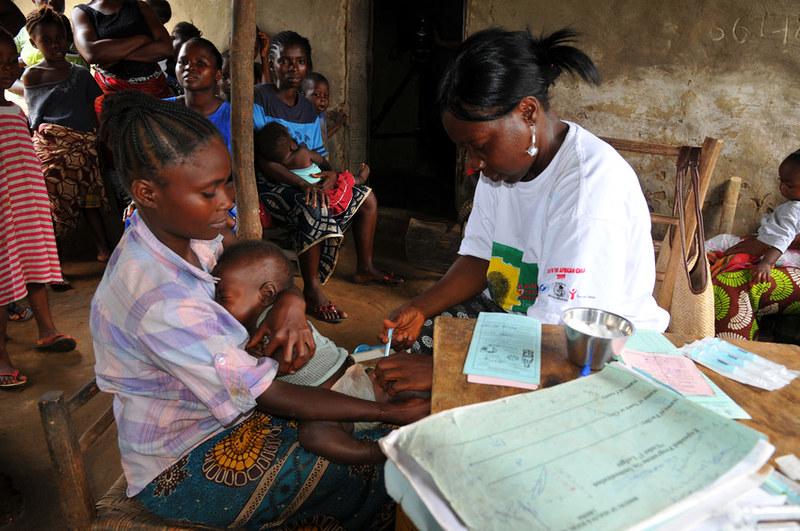Tech Startups Transform Vision and Hearing in Africa
 Africa faces critical health care gaps, with millions lacking access to vision and hearing services. According to the London School of Hygiene and Tropical Medicine (LSHTM), 90% of avoidable blindness occurs in low-income regions like Africa, where health care systems remain underfunded. Similarly, hearing loss impacts more than 2.5 billion people globally, with most in low- and middle-income countries. Startups like Lapaire and HearX are addressing these challenges by introducing affordable, tech-driven solutions. Their efforts demonstrate how innovation can potentially transform accessibility and improve health outcomes across the continent.
Africa faces critical health care gaps, with millions lacking access to vision and hearing services. According to the London School of Hygiene and Tropical Medicine (LSHTM), 90% of avoidable blindness occurs in low-income regions like Africa, where health care systems remain underfunded. Similarly, hearing loss impacts more than 2.5 billion people globally, with most in low- and middle-income countries. Startups like Lapaire and HearX are addressing these challenges by introducing affordable, tech-driven solutions. Their efforts demonstrate how innovation can potentially transform accessibility and improve health outcomes across the continent.
Health Care Landscape in Africa
Africa has undergone a rigorous transition and in recent years there have been many positive shifts in related health outcomes. By 2050, 163 million people on the continent will reach the age of 60 and the population is expected to be a staggering 2.8 billion. These successes contribute significantly to the success of the continent as a whole with more individuals reaching working age and more women entering the workforce.
Visual impairment is a significant issue in Africa. 26.3 million people across the region suffer from some form of visual impairment whether that be: cataracts, uncorrected refractive errors, glaucoma, age-related macular degeneration, corneal opacities, diabetic retinopathy, trachoma and onchocerciasis and It is estimated that 15.3% of the world’s blind population reside in Africa.
With today’s medical knowledge, up to 80% of blindness is preventable and treatable. Cost-effective interventions are available for the major causes of avoidable blindness. However, millions of people in the Region remain at risk of visual loss due to the lack of eye-care services.
Evidence indicates that ‘avoidable blindness’ such as that caused by communicable diseases like trachoma and onchocerciasis (river blindness) is decreasing, whereas noncommunicable age-related eye conditions (e.g. cataract, glaucoma and diabetic retinopathy) are increasing. So far, The control of river blindness through the Onchocerciasis Control Programme has resulted in the prevention of 600,000 cases of blindness.
Startups Leading the Way in Vision and Hearing Accessibility
- Lapaire Eyecare: Revolutionizing Affordable Vision Solutions. Swiss lawyer Jérôme Lapaire, while living in Nairobi, Kenya, observed that many working-class individuals could not afford corrective eyewear. This realization led to the founding of Lapaire Eyecare, which started with a simple model: offering $25 glasses and free eye exams. However, challenges such as currency depreciation, high marketing costs and consumer perceptions of low-cost products hindered early progress. Pivoting to West Africa, Lapaire established a strong base in Abidjan, Ivory Coast and expanded to 70 outlets across six countries. With a $3 million funding boost, the company now serves uninsured customers, providing affordable glasses that can significantly improve quality of life. “If people possibly can, they will pay $35 to improve their vision, with sometimes life-changing impact,” Lapaire remarked.
- HearX: Democratizing Hearing Solutions with AI and Innovation. HearX, founded by four South Africans, identified a gap in accessible hearing care. CEO Nic Klopper aimed to democratize hearing solutions by replacing costly audiometers with smartphone-based tools, leveraging AI technology from Pretoria University. Its breakthrough came with the development of over-the-counter hearing aids, facilitated by a 2022 United States (U.S.) legislative change that allowed patients to bypass specialists. These devices, priced at $999 per pair, are far more affordable than traditional hearing aids and connect to a smartphone app for user adjustments and remote consultations. In 2023, HearX achieved $58 million in sales and raised $60 million in funding. However, regulatory hurdles in South Africa, driven by lobbying from hearing specialists, have slowed domestic adoption. HearX continues to pilot more affordable devices and installment payment options, aiming to reach underserved markets across Africa and beyond.
The Future of Accessible Vision and Hearing in Africa
The journey toward accessible health care for vision and hearing in Africa requires immediate, innovative and collaborative solutions. Underdeveloped health care systems demand a mix of public and private sector involvement. With the rise of startups like Lapaire and HearX, as well as conferences like Inclusive Africa, progress continues while promoting digital accessibility. Addressing the core issues of human resources, budget allocation and management could further advance these ongoing efforts. Through these combined ventures, Africa moves closer to a future where vision and hearing accessibility become realities for all.
– Ayat Aslam
Ayat is based in London, UK and focuses on Good News and Global Health for The Borgen Project.
Photo: Flickr
